Chris Baty's Blog, page 119
August 23, 2017
Can a picture inspire a thousand words? NaNoWriMo investigates...

Source: Amanda Lehr

Source: https://www.flickr.com/photos/jchalen...

Source: Amanda Lehr
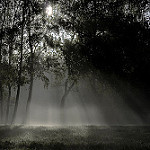
Source: https://www.flickr.com/photos/9781404...
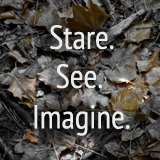
Source: Amanda Lehr

Source: Amanda Lehr

Source: https://www.flickr.com/photos/enerva/...

Source: Amanda Lehr

Source: https://www.flickr.com/photos/jockeam...
Can a picture inspire a thousand words? NaNoWriMo investigates the power of images in our writing lives. Writer Amanda Lehr writes in with tips on how to use a writing mood board.
Finding inspiration for writing can be a fickle thing. Some days, you can overhear snatches of a conversation that would be wonderful in this scene. You see a word that sparks an idea. Or that old man with the creased newspaper moving unhurriedly outside would be a fantastic side character. But sitting in front of that piece of notebook paper, or perhaps in front of that blank word document, suddenly, that bit of dialogue you heard doesn’t make a bit of sense, that old man is too uninteresting to be a side character, and that idea that struck you is rubbish. You try and try to make it work, but no matter how many hundreds of ways you plot and write and scheme it just doesn’t work.
It’s easy to get discouraged in moments like this. It’s easy to let doubt creep in. So faced with this, I ask, what would a writer do? I know what I would do, and oddly enough I have read several author interviews where they say they do something similar upon hitting a wall. They stare out the window. They go for a walk and stare. They look and watch and stare. Eventually by staring, they begin to see. Images can capture moments, a sunset on the beach or a particularly good hair day. But they also capture emotions, feelings, ideas. It’s just a matter of perspective and how you look at them. Sure, all the trees may look the same. But imagine that tree in black and white. Imagine what those leaves would look like if they were gray instead of green. Stare. See. Imagine.
Personally I am extremely drawn to black and white photos. I have a litany saved in various files on my hard drive. The contrast between black and white helps me to focus on the characters and dynamics in my fictional worlds. What characters want and what they need. What the good guys think versus the bad guys. But the best part about the black and white pictures is all the little smidges of gray, and on occasion a single isolated color. That color or that gray area in between the lines of white and black is where the stories are.
Amanda Lehr is a twenty-something-year-old University graduate just muddling her way as best as she can through the plot twists life provides. She is a bookworm, a music lover, a writer (on good days), and an unabashed Toothless lover. You can find her Bookstagram at @fableforager.
Images taken by the author or licensed under Creative Commons. See image captions for sources.
August 21, 2017
“Writer” is the Word: Find Your People

What does it take to call yourself a writer? Sometimes, using this word is a challenge and an act of courage. Writer Karen Beidelman shares a story about how NaNoWriMo challenged her definition of “writer” and her idea of herself:
I began to call myself a writer after winning my first attempt at NaNoWriMo in November 2013. I was terrified at first. I thought I would fail, but I kept writing. I figured anything I could get written during November would be a bonus and having a deadline would keep me motivated. It was exciting.
I decided that if I was going to do this crazy challenge, I was going to do everything I could to get the complete experience. I explored the NaNoWriMo website, discovered the local regions and selected mine. I then discovered that I was not alone in this madness and that there were writing events near me. Who knew? I never imagined other people in my city dreamed of writing and felt compelled to be not just a writer, but one who writes novels.
I went to my first Write-In because I still couldn’t believe there were others like me. I had to see them and meet them. At this point, I still didn’t really think of myself as a writer. I hadn’t written anything longer than a ten-page research paper during my college days and had written almost nothing besides travel journal entries since then. When I went to the first of many Write-Ins, I was welcomed. No one looked at me and saw me for the fraud I felt I really was. We sat at tables and participated in word sprints. I’d never heard of such things, but when they started the timer and everyone got quiet, I wrote along with them because I thought everyone would notice if I just sat there staring into space.
“I felt more writer-like when I was with my fellow Wrimos. I began to see them as writers, and eventually included myself in that group of writers.”I felt so successful by the time I left that first night that I went online when I got home and found other events to go to. There were gatherings almost every night of the week not very far from my home! I felt more writer-like when I was with my fellow Wrimos. I began to see them as writers, and eventually included myself in that group of writers.
I used to think that in order to call myself a writer, I had to not only write a novel, but get it published and see it on the shelves of local bookstores. Thanks to my experiences of writing with the groups I met through NaNo, I now understand that barely a fraction of writers will ever reach that unrealistically high goal. Many writers never write novels, but that makes them no less a writer. A poet is a poet after writing just one poem, so a writer should feel comfortable calling herself a writer after writing just one page, one blog post, one story, or one great sentence.
If you want to be a writer and you actually write on a somewhat regular basis, you can join the esteemed club where we refer to ourselves as “writers.” I still want to be able to walk into a bookstore and see my novels on the shelves there, but I won’t allow myself to feel like a failure if that never happens. The only thing that can make a writer not a writer is if they stop writing and never take it up again.
If you want to be a writer, find your people. Find other writers like yourself and get to know them. They won’t bite, really. They are probably just as unsure of themselves as I once was. Keep at it until you gain the confidence to call yourself a writer.

Karen Beidelman began writing late in life. She participates in several local writing events each month and is finally writing year-round, instead of just in November. She lives in Indianapolis with her husband of 31 years. She works full-time, but enjoys traveling, reading, writing, creating forms in Excel, genealogy, and crocheting hats for the homeless when she isn’t working. She shares some life lessons she has learned through experience on her blog at LightHouseLifeLessons.com.
Top image licensed under Creative Commons from Nathan Marciniak on Flickr, desaturated from original, with added text.
August 18, 2017
NaNo Rebels: The Art of the Short Story
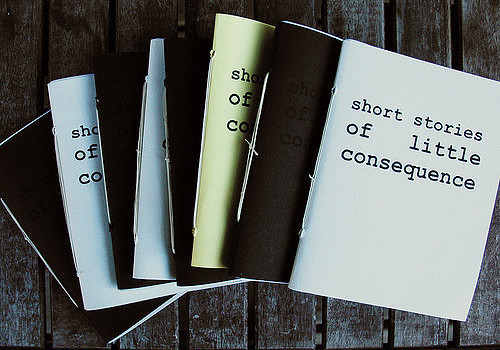
As we begin to dive into NaNo Prep season, we’ve talked to some NaNo Rebels working on non-novel projects. Today, NaNoWriMo participant Monique talks about some of the advantages of short story writing:
The beauty of words lies in their ability to be manipulated into so many different forms of media. While novels have given us the power to create worlds of magic and decay and everything in between, they’re not the only source of stories that stick in people’s heads for ages to come.
Take “A Good Man Is Hard to Find” by Flannery O’Connor, a 1953 short story about a family vacation gone very, very wrong. The story itself is around 6,500 words and yet has become a staple in creative writing class discussions. I read this story back when I was a freshman in high school, and to this day as a graduate student, I still wonder about that batty grandmother and The Misfit.
Perhaps, though, you’re not up for critically analyzing each character and line of dialogue in something short-form. J.K. Rowling’s The Tales of Beedle the Bard is a collection of short, magical fairy tales, including the now-iconic “The Tale of the Three Brothers.” The fandom has since pointed out the parallels and symbolism between the story and the great Harry Potter, but within the collection are other fantastic tales that can be told in five minutes or less. (But I probably don’t need to tell you that. It’s J.K. Rowling, after all.)
The point is, short stories can be just as entertaining and as profound as novels, if not more so. Though you still might want to take on the challenge of writing 50,000 words in one month, consider writing something you can read over your lunch break or when you can’t sleep at night. Some ideas don’t need several chapters of backstory and three different subplots. Less can absolutely be more.
So then, how short is a short story?There are countless opinions on the word count of a “short story.” Bibliophiles might think 50,000 words is short, but some stories can go as short as 1,000 words or less. Most often seen in the fanfiction world, a “drabble” is an ultra-short form of fiction, clocking in at 100 words or less.
Here’s the thing about writing, though: we’re not confined to any word count at all! It’s up to you, the writer, to define the length of your story. Words like “short” are relative to each individual, right?
Take it from me—word count has always been, for whatever reason, a daunting number for me. Similar to my GPA and my weight, my word count for the work I’ve written is something that intimidates me if I think about it for too long. Did I add enough dialogue? Did I write enough detail for the readers to understand the setting? Are the characters fleshed out, but not too fleshed out that it takes away from what I’m trying to convey?
“Consider creating a story long enough to contain all the elements it needs without all the elements of a novel.”That’s a little battle of mine that I’m slowly starting to win. Of course, I could stretch some of my short stories into full-blown novels. However, whenever I finish writing in that moment, whenever I look over my work several times over and make sure there isn’t a typo or continuity error, there’s a feeling that I know I’ve written enough. (However, knowing when you’re finished is another topic for another day.)
In short (hah!), consider creating a story long enough to contain all the elements it needs without all the elements of a novel. It can be a challenge to some to cut down on the description and dialogue, or it can be a cakewalk for some who like it short and sweet. Whatever the case, you are still able to incite emotions and build captivating worlds for your readers, be it in 50,000 words or 5,000 words or even 500 words.

When she’s not pursuing a master’s degree in a field completely unrelated to fiction-writing, Monique, or Momo for short, caters to anime watchers and manga readers through fanfiction and all-caps discussions of alternate universes. She won her first Camp NaNo in 2014 and continues to participate in NaNo events whenever she’s able to. In the meantime, she continues to learn, improve, and most importantly, write. You can find Momo on Tumblr or Twitter.
Icon commissioned by Jazzmin.
Top photo by Flickr user Mehmet Nevzat.
August 16, 2017
Can a picture inspire a thousand words? NaNoWriMo investigates...

https://www.flickr.com/photos/ashleyr...
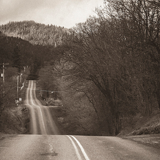
https://www.flickr.com/photos/thinspr...

https://www.flickr.com/photos/skynoir...
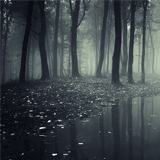
https://www.flickr.com/photos/1368070...
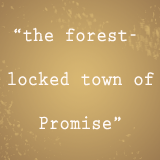

https://www.flickr.com/photos/huntfio...

https://www.flickr.com/photos/victorv...

https://www.flickr.com/photos/ashleyr...
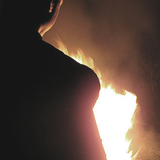
https://www.flickr.com/photos/tekmagi...
Can a picture inspire a thousand words? NaNoWriMo investigates the power of images in our writing lives. Author Katya de Becerra describes how using an image board brought her novel’s setting to life:
For me, a book begins with a place. The feel of this place, its colors, its peculiar atmosphere–all of it has to be just right, especially early on in a new project. Whenever I start working on a new book, as I play around with the protagonist’s voice and craft the early chapters, I set up a dedicated image board. I then sift through hundreds of pictures on Pinterest, Flickr, Google, populating the board with images that make sense to the story I have slowly building in my head.
As my visual board grows, I jot down ideas. My image selection process is interwoven with those key writing stages when I’m working out my protagonist, her voice, her goals, the way her mind works. On a deeper level, the process is interlinked with the mystery at the book’s heart–a question, an old secret, an almost sentient locale where the protagonist perhaps had a reality-altering experience, or where she witnessed something she was not meant to see.
With my novel What the Woods Keep, which eventually got me my agent and later a publisher, I knew the title from the get-go. Then the book grew around it, becoming more complex with each revision. The book’s core remained stable throughout–a young woman’s emotional homecoming, her relationship with her mother, her creepy windswept hometown and the boy-next-door who stayed behind while she got to leave. With the help of my image board, the forest-locked town of Promise, where the book is set, eventually got to tell its own story, acquiring a mind of its own and interacting with the protagonist in a way a regular character would.
Later, when I worked on the book’s revisions, my image board came in handy once again: the pictures I had so painstakingly selected as I wrote the book’s first draft shifted my mind into the right kind of mood, taking me once again back to Promise. It can be a difficult task to maintain the same feel to the book after months of working on something else, while waiting for feedback from your editor. My image board was instrumental in the task of keeping my rewrites true to the story and I can’t recommend it enough to all writers, experienced or new to the craft.
Katya de Becerra is a Melbourne-based author of Young Adult books. Her stories tend to be set in strange locales where it rains a lot and odd misunderstood things go bump in the night. She has two forthcoming books, What the Woods Keep and Oasis, both acquired by Imprint Macmillan in 2016. In What the Woods Keep, a girl inherits a riddle from her mother’s estate that leads her to a strange Colorado town where her physicist father has been studying strange phenomena. Oasis, a horror-adventure with a diverse cast set in Dubai, was originally a 2014 NaNoWriMo project. Find Katya at her blog at where she talks about pop culture, urban fantasy, science fiction and monsters, and also on Twitter @KatyaBecerra and Facebook @katyadebecerra.
Images licensed under Creative Commons. See image captions for sources.
August 14, 2017
“Writer” is the Word: Conversations in the Car Shop
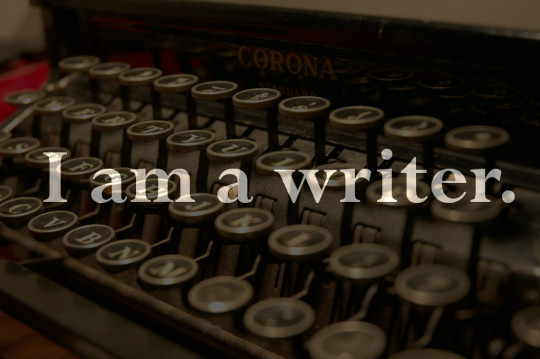
What does it take to call yourself a writer? Sometimes, using this word is a challenge and an act of courage. Writer Rosario Martinez tells the story of the moment she finally shared this part of her identity with stranger—and what came next in her writing life:
I always knew what I wanted to do when I grew up: write stories. But that was a long time ago, when “writing” wasn’t something I thought of as a job, let alone a career. It felt so out of reach for me, and I began to think only a very lucky few could achieve this dream. Being the people-pleaser that I am, I moved on to something else. It’s not that I didn’t want to be a writer, but I got really good at pretending I could ever be anything else.
For a long time I worked a job I thought I could make my career, checking all the boxes on my long list of tasks that needed to be done before I could move on to the next step. It was inorganic and a heartless approach to a life I thought I wanted. During that time, I’d pull out my notebook at night and just breathe the words that had been saturating my head all day long. I did this for many nights and rare free weekends. It made me so happy to just write for myself. Knowing that no one would ever need to know what I was writing or read my stories made me feel good. It was like my very own little secret.
People who knew me from very young and through my high school years always said to me “you’re the writer,” but I didn’t feel comfortable saying it myself because I hadn’t accepted that part of me as something that was actually attainable. It was something that I did and that people liked. That was it. I had so little faith in myself back then.
Then there came a point when I couldn’t deny it to myself anymore, and I realized that I didn’t have to be the one standing in the way of my own happiness. I remember the day I first introduced myself as a writer. I was at the car shop waiting for my car when a man next to me began to make some small talk. Somewhere in the conversation he asked me what I did for a living, it was in that moment that without hesitation I said, “I’m a writer.” I had been waiting so long to say those words that even though I had just began writing my manuscript, I felt accomplished. It was so easy and freeing to finally be able to say it out loud. I had been afraid to admit it to myself and to others mainly because it’s not your typical 9 to 5 job. Once I truly accepted what I had known all along, it became easier to make time to write. I took the time to get to know myself and what truly made me happy.
“It was in that moment that without hesitation I said, ‘I’m a writer.’ I had been waiting so long to say those words.”In hindsight, I think I was meant to meet that man. When I told him that I wrote for a living he didn’t question me about it or look at me with pity like many had done in the past. Instead his face lit up as he told me he was a pastor and he wrote his sermons every week. He was, in some ways, a writer in disguise—yet a writer nonetheless—and that made me feel secure, and that being a writer was possible.
Since that day, writing has come first. I make time, though it wasn’t easy at first. Accepting my commitment to write has made it more manageable. Writing is like swimming—the less you struggle, the easier it gets. And the more time you spend practicing writing, the better your prose will be.
There were a number of times when I wanted to join NaNoWriMo but didn’t because I didn’t think I was a writer. Don’t be discouraged because you didn’t finish one year, because I didn’t even begin—year after year I made excuses for myself. Until last year I said, “let’s go.” I didn’t finish, but I did get a good number of words down. It made me so proud of myself. The ball was in motion, I wanted to keep writing and know where my story was taking me.
Fast forward to last month’s Camp NaNoWriMo: I completed my goal of writing 20,000 words bringing my manuscript to 100,000 words. You can do it, and don’t let anyone tell you that you can’t. Believe in your story, but overall believe in yourself. You’re a writer—be a writer and write something. Stop making excuses and write that story that wants to be written. Do not be afraid to be who you were meant to be.

Rosario Martinez is a writer based in Texas where she lives with her husband and their 3 sweet but demanding cats. She’s currently working on a YA Sci-fi/Fantasy novel that’s been brewing in her head since 2007. She has too many flannel things and believes a good bowl of nachos is life. To follow her journey to publication visit her blog or find her on Twitter @lemmonavenue08 and Instagram @rosariowrites.
Top image modified from Ra Reyes on Flickr.
August 11, 2017
I Published My NaNo-Novel: Drawing the Map to New Horizons
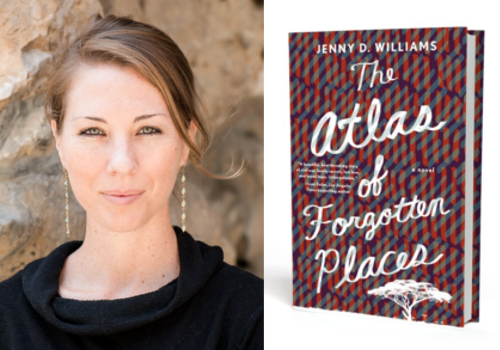
We love talking to Wrimos who’ve published their NaNoWriMo projects and asking them how they got there. Today, Jenny D. Williams author of the novel Atlas of Forgotten Places , shares her story of how her NaNo draft inspired ideas that would make their way into many other works.:
The first year I did NaNoWriMo, I was living in East Africa, volunteering with a humanitarian organization in Uganda and southern Sudan. I’d been writing about the region for half a year already in the form of grant applications, emergency funding requests, and project reports. I wrote about things that could be measured: dollars spent, blankets distributed, wells drilled, refugees supported.
The work was necessary—and narrow. What of the things beyond measurement? What of the smell of dusk, the intimacy of another passenger’s skin pressed warmly against yours in a packed minibus? What of the sociopolitical quagmire of the northern Ugandan conflict, so vastly more complex than the 30-second sound bites that reached Western audiences?
Unsettling questions of aid work and responsibility coiled like snakes in my stomach. I longed to wrestle with these uncertainties on the page—the grit, the guilt, the grace. I needed more than a few paragraphs in a newsletter or a matrix in a budget report. I needed a looser structure, uncharted imaginative space.
50,000 words of fiction sounded just right.
That November, I hauled my laptop on bumpy bus rides to remote field offices all over Uganda and across the northern border to a region whose stamp in my passport read “New Sudan.” I have vivid memories of my room in Ikotos, in a compound that also housed bomb shelters used during the war, where I stayed up long after the generator was turned off, racing against the dwindling laptop battery to meet my daily word count.
It was energizing. It was exhilarating.
It was a terrible novel.
But it was a start.
The experience of writing that NaNo novel—as halting and insufficient as the final product was—had opened a new space in me. For years, I returned to the ideas of that manuscript again and again in the form of short stories, poems, essays, and a graphic novel. When, half a decade after I left Uganda, I finished my MFA and moved to Germany, I gave myself a year to write a complete novel draft. I wanted to take my time. Go slow. I was ready for that, now.
I didn’t reread the NaNo file; I didn’t need to. Its purpose was fulfilled. As Jane Smiley writes:
“Every first draft is perfect because all the first draft has to do is exist. It’s perfect in its existence.”
Though the characters and story transformed radically before finding their final form in The Atlas of Forgotten Places, it was the original NaNo novel that gave me a taste of the vast, wild territory of novel writing, and the confidence to see a project through.
Today, eleven years after that NaNo novel began, Atlas is on the map—it’s named and categorized, its borders drawn—and I find myself restless and searching. A new novel glints on the horizon. A new continent of here be monsters.
A new November, here I come.
Jenny D. Williams has lived and worked in the U.S., Germany, and Uganda. She holds an MFA from Brooklyn College and a BA from UC Berkeley. Her award-winning fiction, nonfiction, poetry, and illustrations have been published or are forthcoming in The Sun Magazine, Vela, Ethical Traveler, and Michigan Quarterly Review as well as several anthologies. A former Teachers & Writers Collaborative fellow and recipient of an Elizabeth George Foundation grant for emerging writers, she currently lives in Seattle with her husband and dog. The Atlas of Forgotten Places is her first novel. Find her on Instagram @stateofwander and on Facebook.
August 9, 2017
Can a picture inspire a thousand words? NaNoWriMo investigates...
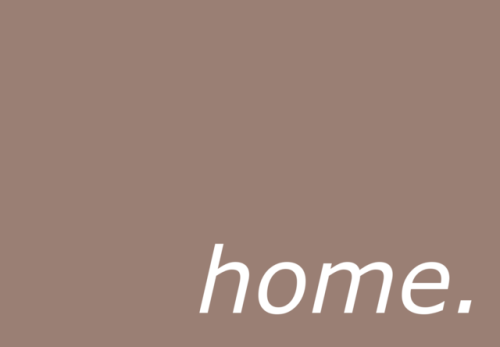

https://www.flickr.com/photos/lierne/...

http://rhyva.info/rundown-city-apartm...
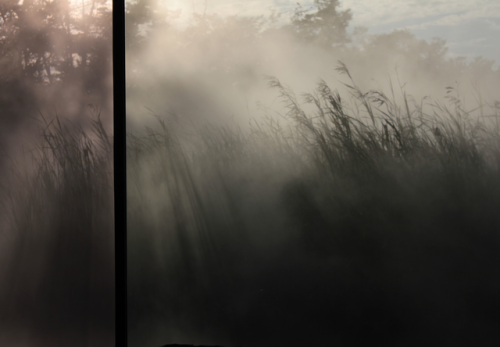
https://www.flickr.com/photos/2675705...

http://rhyva.info/rundown-city-apartm...
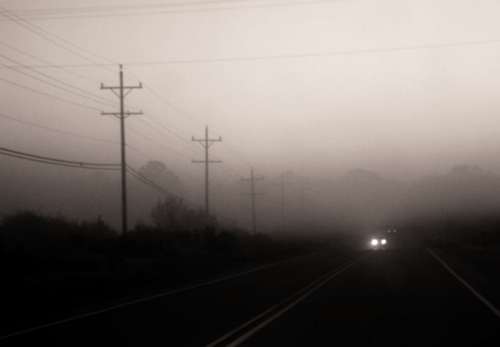
https://www.flickr.com/photos/indyket...

https://www.buzzfeed.com/ailbhemalone...
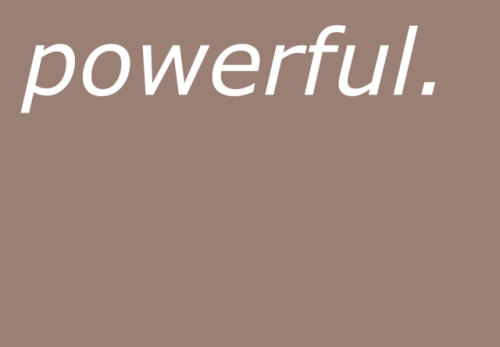
Can a picture inspire a thousand words? NaNoWriMo investigates the power of images in our writing lives. Author Massiel Valenzuela-Castaneda writes in with tips on how to use a writing mood board.
Are you feeling lost? Like your story has changed? Should you be using a writing board?
“A writing board is a mood board (or inspiration board) is a physical or digital collage of ideas that’s commonly used in fields like interior design, fashion, and graphic design. It can include just about anything — photography, designs or illustrations, color palettes, textures, descriptive words — anything that helps you define the direction of your project.” Canva.com
Here are a few ways the writing mood board can help.
Feel the tone.Photos stir emotions, memories, and the five senses. Your board captures the tone of your novel whether it be dark and grimy or lovely and cute. Your photo collection will convey the same tone from day one. If you’ve lost your place, return to your board and soak in the tone that you originally created. Ever see a photo of Halloween time and practically smell the autumn leaves? Or see a house in winter, and you feel the warmth of the hot cocoa during those snowy nights? The writing board can evoke those sensations.
Seek continuity.Once you’re done with your board, take a step back and observe it as a map of all the places you have yet to explore. Looking at the variety of settings in my board, I realized that my protagonist did not have a place to call home. But I only recognized it after I could see where most my story did take place. Which also begged the question, where would the climax occur? I was only able to realize this when I saw an overview of the places I wanted to include.
Character roots.The coolest thing about a writing board is representing your characters. Characters in action create emotional resonance. In my board, I wanted a character who is limited in some way but resilient so when I came across an article about a one armed athlete, I felt my character could represent the potential to be as brave and powerful. The driving perseverance in this photo conveys the same core values that I want for my character.
I’m sure there are many more ways that writing boards can inspire us. If you’re stimulated with visuals or simply want to have fun and keep your mojo going, then I recommend a writing board.
After all, a board with lots of images is worth at least a couple thousand words.
Massiel Valenzuela-Castaneda is a writer and reader of YA, fantasy, and self-improvement books. She’s published a handful of short stories and novellas under a pseudonym (very fun) and now, she is working on the draft for her first real-name novel. She works in Hi-Tech and is also a freelance writer specializing in personal finance and women-empowering businesses. An optimist and recovering perfectionist, she loves to make friends and wants to help make the world a kinder, more inspired, and more diverse place. Find Massiel on her website, Twitter, and LinkedIn.
August 7, 2017
Creative Synergy: The Deep End

We Wrimos do amazing things when we set ourselves to writing a novel in a month. For many of us, however, our creative energy goes into more than one passion. Writer A. J. Graz explores the connections between his loves of swimming and writing, both which inspired him to persevere through challenges and discover a supportive community.
You swim—cold, barely clothed—and gasp for air. Your hand, sore from writing seven pages this morning, draws blood against the poolside grout. The clock reads 4:55 am.
A half-empty notebook rests on the aluminum bleacher. The wrinkled towel tempts you with the hot shower waiting behind the sweating locker room door.
Three eyeless figures slip out of the water next to you, wearing hard-mirror goggles and snap-tight caps. Five more ghosts rise out of the next lane. No one splutters and gasps like you do.
The woman in the faded Chicago cap says, “50,000 free, decreasing. Go.” That’s an impossible distance, but no one acknowledges it. They simply kick off the wall, one after the other. No one looks back for you.
You gulp oxygen and lurch back into the frigid water, pushing off just one more time.
It’s 20 days into NaNoWriMo and you have no idea how to hit 50,000 words. The story villain naps. The plot tangles like discount yarn. Snickering students will mock your rotten grammar for decades. Worst of all, you posted your name and NaNo goal in every neighborhood of the internet. With 25,000 words left, it might be wiser to fake a scooter crash.
Every regret in life nips at your heels as you slew in, chest heaving, to the end of the swim set. Your cheeks burn in shame. Then you glance at the clock, which must be broken, and check it against your swim watch. It reads 950 yards further than ever before.
The woman in the faded Chicago cap leans down and pulls off her goggles. Unforgiving glass reveals a mother’s tired eyes, ringed after a week of overtime and racing from softball to travel soccer. She smiles, drops a hand to fist bump, and says, “You tore it up today. I don’t know how you do it—I was so tired that I almost went home.”
We Wrimos don’t always talk. We may not even acknowledge that we’re in the same pool. But we are there. Swimming, alone, in the dark, all together. Scribbling into leather journals next to cold cups of coffee. Typing furtively in the empty conference room at lunchtime. We fellow Wrimos are with you. And whether you know it or not, we’re tired too, and you’re inspiring us. Your writing, your idea, your creativity. We can’t wait to read your book, your poem, your memoir. Your story.

A. J. Graz is an engineer who lives in the Midwest and writes science fiction about karate, lasers, and treachery.
Top photo by Airman Magazine on Flickr.
August 4, 2017
I Published My NaNo-Novel: Seasons Change, NaNo Remains

We love talking to Wrimos who’ve published their NaNoWriMo projects and asking them how they got there. Today, Dan Findlay, author of the novel Year of the Orphan, shares his story of how NaNo kept him motivated through rejections and publication:
Since I was five years old, borrowing characters from Enid
Blyton and writing Famous Five fanfic, I’ve dreamed of being a writer. My mum gave me a little spot under a window and
I filled writing exercise books with imagination. Many years later, working
nights in a deli, I would finish my mopping and slicing and go home to write
until the sun came up. Writing, and dreaming about writing, filled my head, but
it wasn’t until another decade passed that a friend and fellow writer told me
about a magical thing called NaNoWriMo.
My first
NaNo, I didn’t quite get to my goal. To be very honest, I stopped after about
three days and about 49,000 words short. “How do they do this?” I wondered.
How did my friend manage to sit down day after day? And what did it feel like
to see all of your words, maybe even the beginning of a book, beaming back at
you from the screen?
The
following year, I started my NaNo mission in March. For six months I read and
re-read everything I could find in the genre I loved; post-apocalyptic
speculative fiction. The Road. Riddley Walker. A Canticle For Leibowitz. When
November rolled around I knew the story would be set in my home country of
Australia and I had met my protagonist, the Orphan.
Every day
that November I put words down and I often fell a long way short of the daily
target. A big weekend saw me claw back thousands of words. A big night out saw
me struggle to put down a hundred. With a final push during the last two
days, I reached my goal of 50,000 words,
having written something every single day for a month, for the first time in my
life. Relief. Elation. The sobering knowledge that I had a very raw story that
needed shaping.
A further
three months saw me add a climax. A couple more and I had given the draft an
edit of sorts and I entered my manuscript in a prize for unpublished authors.
Months later I was lucky enough to receive a personal note along with a
rejection. “Year of the Orphan is interesting,” it said, “but we’re not sure
how we’d sell it.” Another rejection followed, suggesting a structural edit
might help. I edited again. And again. Work got busier, a new year’s NaNo
approached. I sent my manuscript to another publisher while I readied myself
for a fresh attempt. Hovering in my consciousness was that NaNo was always
there for me. It would roll around like a season, and if I was ready, it would
help me write something new.
That
month I received an email containing an offer from Penguin Random House to
publish my debut novel, Year of the Orphan. It was the most exciting thing I
could imagine and it had all started with NaNo. It was an offer not just to
publish, but an invitation to work even harder than I ever had before on a
story. The reward is that it’s now being read by people all over the world.
This year in May, just a month before printing, I wrote my
acknowledgements and included a note to thank NaNoWriMo. I have attempted it
more times than I have completed it, but I always know that each November it
will be there, inspiring me to sit down and get to work. Even if this isn’t the
story that ends up published (or finished), I’ll get to try again.
Dan Findlay is a historian by training and a writer for kids by trade. Dan has over ten years experience editing Australia’s leading youth magazines. He also has over a decade of freelance experience as a writer and photographer for Rolling Stone as well as contributing the odd music story to the Sydney Morning Herald and writing for a wide variety of other pop culture titles. His debut novel, Year of the Orphan, was published earlier in 2017.
August 2, 2017
8 Steps to Break Through Writer’s Block

Although Camp NaNoWriMo has wrapped up for the year, this doesn’t mean that you have to stop writing until November! Inspiration can strike at any time, so it’s good practice to take advantage of it when it does. Today, Piyusha Vir, Municipal Liaison for the Asia :: India region, gives you some advice on how to find that inspiration even when you feel blocked:
All of us face a blank wall sooner or later. Even experienced writers and successful authors face it. But for new writers, it can be even more difficult to start off. The blank page or screen stares intimidatingly back at us as we struggle to fill it with something interesting.
We start to write something, then think again. We delete it only to rephrase it differently. We may reach half way across the page and still not be happy with what we’ve written. No matter how many times we make a start, somehow we just can’t seem to get it right.
If this sounds familiar, here are some tips to get over that initial roadblock:
1. Use something random.Use random phrases, idioms, words, quotes, song lyrics, photos, dialogues, tweets, Facebook comments, etc. as inspiration. NaNoWriMo has some great prompts that come in Camp Care packages in April and July, and tweets throughout November.
2. Read about writing.Read as many articles or posts on writing as you can. These usually offer very insightful tips on how to approach the process of writing, and are also very helpful in giving tips on how to pick up ideas from around you. They can help give you a spark to get you started.
3. Connect with others.Read other people’s blogs, posts, and comments. It usually triggers off something––the memory of a similar incident, the death of a loved one, your own take on life, your opinions regarding a social evil, love for a shared interest. All of these can be developed into a chapter, scene, or jumping-off point.
4. Reflect on life.Take a moment’s pause and reflect on your life––important milestones, incidents and/or experiences, lessons learned, or even setbacks. You may want to write about them and share them with others.
5. Take a break.Disconnect from your writing and connect with the real world. Remember that there’s life beyond the virtual world (I really need to take my own advice). Listen to music. Take a walk. Observe and absorb the sights around you. Real Life and Nature are both very good sources of inspiration. Explore a place and use it as a setting for a story or post. You can create a fictional account of a seemingly happy married couple fighting while on holiday, an interaction between two strangers who are stuck at a bus stop in the rain, a philosophical take on failed relationships, a poem about the starry night sky. Anything from the real world can be developed into something on paper.
Taking a break is very important as it helps declutter your mind. Pick up that half-written draft that you tossed aside yesterday. Revisit a previously written draft after a short break. Stuck in the middle of an article? Leave it alone for now. Sometimes, the time away from your desk helps you see your writing with a fresh mind and perspective. This not only improves the quality of writing but also helps you avoid glaring mistakes that may distract and take away from the message in your story.
6. Talk. Read. Ask.Just involve yourself in the stories of other people. Talk to your neighbors or ask a couple how they met. You will get to know a lot more than you initially did. Not only does it create better relationships with the people around you, but also gives you insights about people and how certain incidents shaped their lives and made them who they are. These discussions can become the basis of a character study in your novel.
7. Ask for advice.Read up about the experiences and advice that veteran writers share. It may not give you ideas but will give you comfort and solace in knowing that you are not the only one experiencing writer’s block. Give yourself space and time.
8. Write. Just write.However obvious this point may seem, it can’t be emphasized enough. You may not have a clear idea of how to express what you want to write, so just ramble on. You may not know what to talk about or how to go about it. So, just write about the first thought that comes to mind. If you burnt the chicken casserole, are frustrated with your pathetic painting skills, or couldn’t find that important appointment letter, then write about it. Pour out your feelings. It doesn’t matter whether it makes sense or not. You can always edit and re-edit it later. You don’t have to even publish it or share with anyone at all. But developing the habit of writing is an important step in the right direction.
Whenever something from any of the above steps sparks off a writing idea that germinates in your head, go to this step. Just write. Before you know it, you will have already crossed the “writer’s block” hurdle and will be writing furiously away to glory.
A version of this article was first published on WanderingSoulWriter.com.

Piyusha Vir (ML for Asia :: India) is a ‘sometime sane reader, part-time crazy writer, and full time wacky alien’. She is currently working on her first novel (which started in April Camp 2016), as well as various travel articles and short stories that she writes on her blog, wanderingsoulwriter.com. You may often catch her prowling the bookshelves at the CWI venue Readomania Lounge (in Delhi).
If you wish to join the 'very crazy, sometimes active, always supportive’ Delhi NaNoWriMo gang, message her on the NaNoWriMo site.
Top photo by Flickr user Jeremy Bronson.
Chris Baty's Blog
- Chris Baty's profile
- 63 followers



